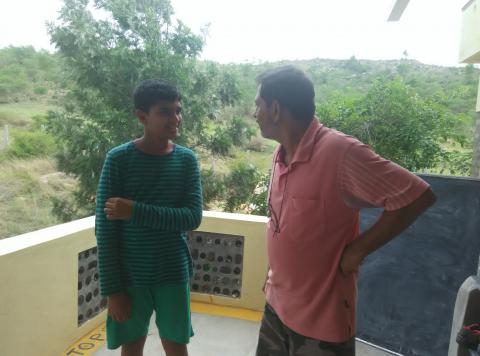


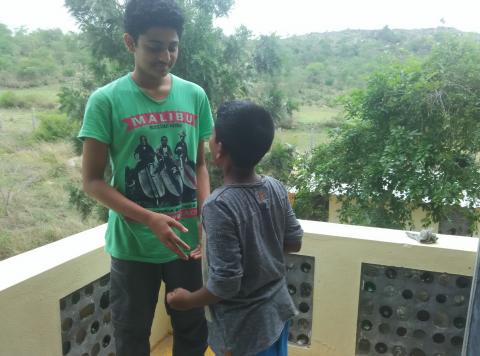
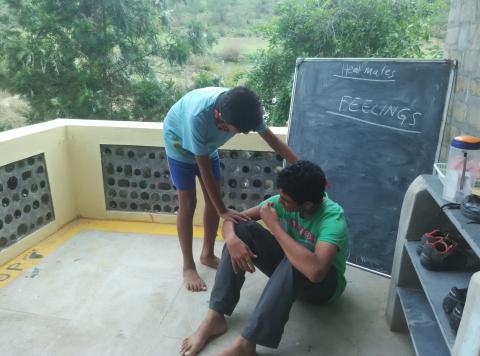


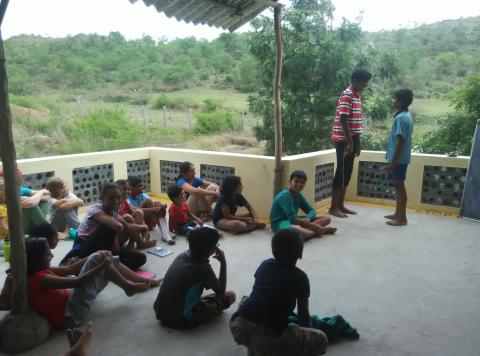
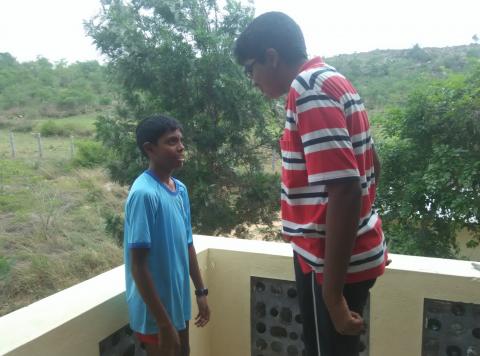
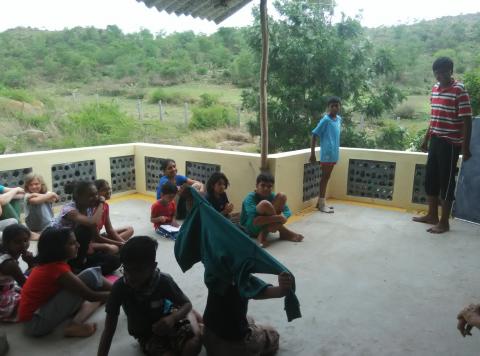
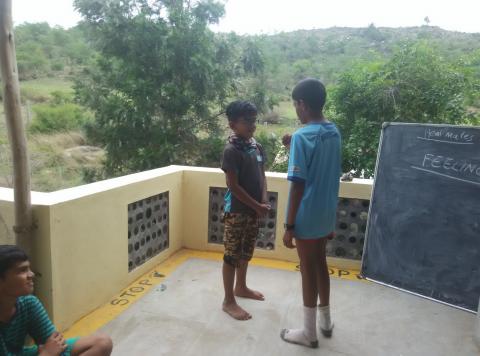
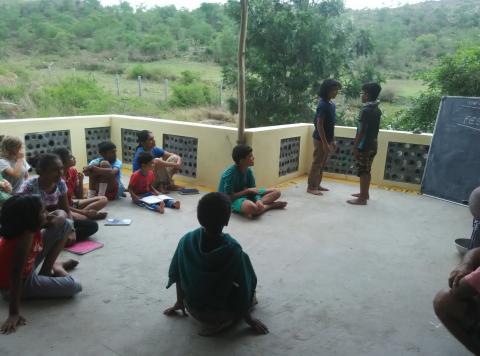
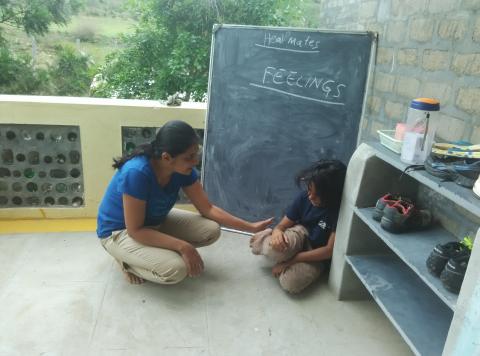
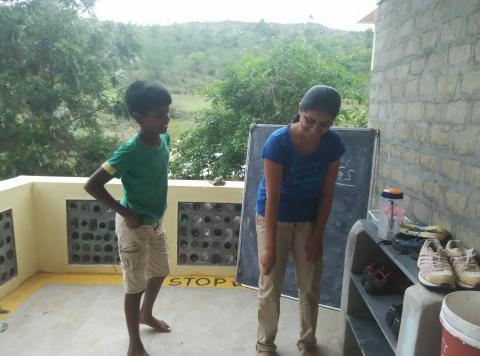

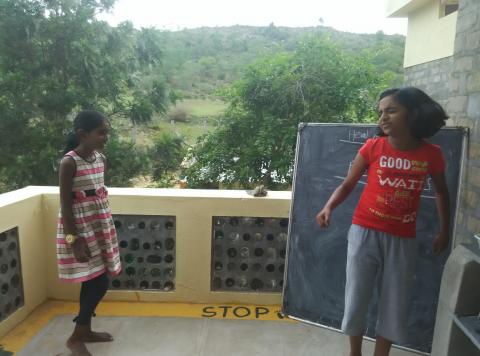


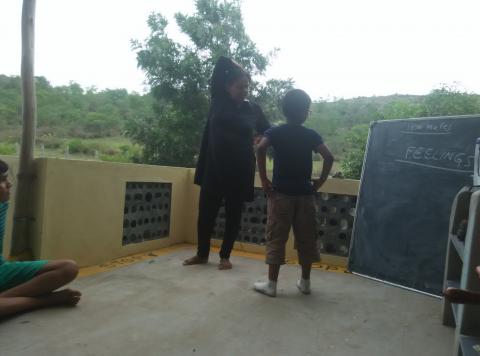
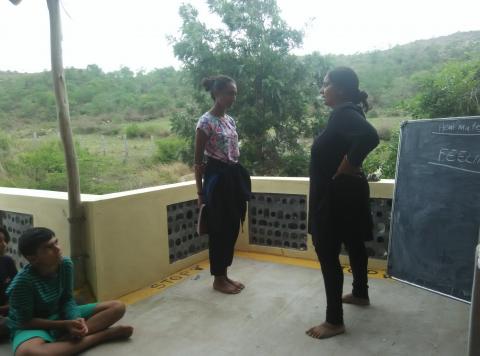
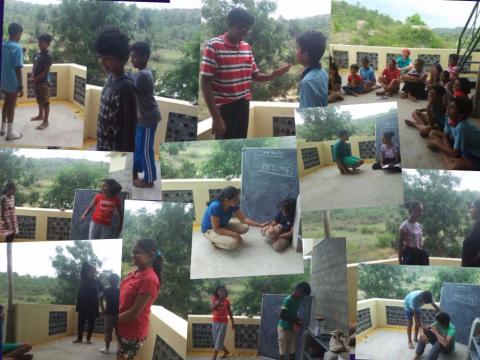
When a child vomits, do you we worry about the vomit (we need to clean) or you worry about the child and his or her well being. Chances are you focus on the child, how is he or she feeling, worrying not about the vomit perse, but about the child’s stomach – you connect with the inner issues.
But when a child misbehaves, we often focus on the behaviour. What will happen, if we start focusing on the (inner) feelings? How often we react to what we see (or is visible) – and what we see can often be disgusting – the vomit. However, what is visible is neither the cause, nor the real area of concern. It is churning inside the child’s stomach that was the real trouble.
The vomit (behaviour) needs no response, the inner state of stomach / mind (the feelings) – is important.
When we look only at the behaviour – the equation is:
Visible: Disgusting Behavior ~~ Response: Caustic Reaction
But if we add a third dimension here – see how the response changes
Reason: Child’s feelings – Visible: Disgusting Behavior – Response: Empathetic Respect
Respecting Feelings: The premise is that when children’s feelings are respected, they learn to respect their feelings; When they learn to respect their feelings, they start to respect themselves; when they start to respect themselves, they start to respect others; when they respect others, they also respect other’s feelings, they understand, they empathize, they care.
At Aarohi campus, in July we hadHeal-matessession onacknowledging feelings. We played multiple role-plays in pairs (see the pic). Even in role play, it was tough initially to identify and acknowledge feelings. But soon kids got the hang of it and started to identify and acknowledge the feelings.
They shifted from justifying their act to acknowledging feelings. You are feeling……….frustrated, annoyed, bored, excited, worried, concerned, excited, challenged, confused…The universal need of all – specially children, is to be understood. And the most important lesson we can give to children is of taking care of oneself emotionally.
Here is how we do it:
-
Realise that no matter how the child feels, it’s alright to feel that way. It’s only how the child expresses those feelings that could be a problem. Which means the child is justified to feel the way he or she feels, there is nothing right or wrong about the feelings per se. So the first level is we accept the child’s feelings.
-
If we are able to understand the feelings – we might be able to deal with them better. So the second level is to understand child’s feelings – we do this by identifying the feelings – (What exactly is the child feeling) – He seems to be ‘upset’.
-
The third and the crucial step is to respect that feeling – its alright to feel the way you feel – so we acknowledge the child’s feelings by communicating – “You look upset”. By respecting the child’s feelings this way we are respecting the child’s innermost persona, the core from where the child operates, the heart.
EMPATHY is not about agreeing, it’s about accepting – When children misbehave or show unacceptable traits we tend to fire the judgment gun. We label them negatively, reprimand them, and get upset with them. Yet what they actually require is that we try and understand them and show this understanding. The moment the child is understood and therefore his or her feelings are accepted, it changes the mental state, which would change the behavior. We may not agree with child’s behavior, but we can still respect the child as an individual with their own specific feelings. Also, this acceptance relaxes us and makes us better equipped to initiate a change in his mental state which will stop this behavior.
If child is crying for something, “You are upset. What else can you have?”
If child is hits another child, “You are angry with him. How else can you express?”
If child is teasing others, “You are enjoying yourself. How else can you have fun?
To empathize is to show children that you are a perfectly respectable human being and we like the way you are. We do not want to change you; however it may be helpful to sometimes change your behavior. When children feel that it is not them who somebody is trying to change, but only the behavior that needs to be adjusted, children are more open to changing.
The child who vomits, needs our care. The child who misbehaves needs our respect and love.